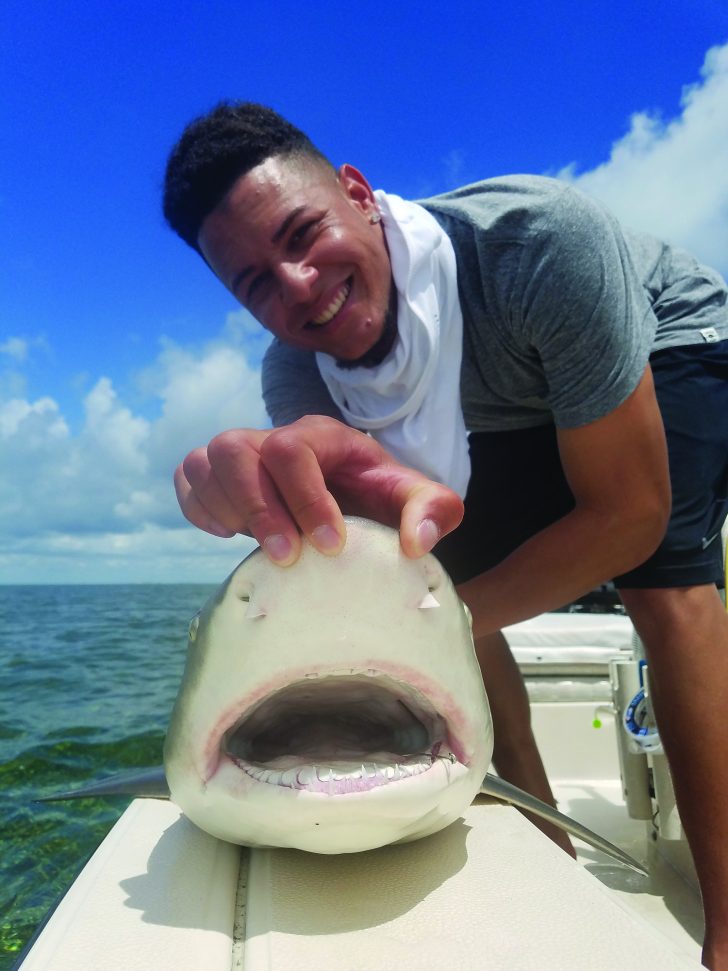
One of my daily observations is the passion and drive anglers have to catch a fish, a simple fish. Why is that? While most anglers will have different responses to this question, I believe the answer is very simple, it’s fun! It’s fun to fool a fish to eat something you are offering and enjoy their struggle at the end of the line. Another reason it is fun to catch a fish is because the pursuit thereof is actually quite challenging. Sure, we can put out a chum bag and drift back baits almost guaranteeing a grand time catching fish of several species. It is another thing altogether trying to catch bigger fish, or fish who are very elusive, this is the real challenge and what makes it fun for the experienced angler. While most non-anglers believe fish are dumb and easy to catch, they couldn’t be anymore wrong on the subject. I believe fish have a very limited intellect as well as the ability to be conditioned. Case in point for the doubters reading this article, Robbies in Islamorada have “pet” tarpon at their dock that rarely ever roam far from the marina because they are constantly being fed by tourist. These fish have been conditioned to wait by the dock for the handfuls of herring being provided by a couple from Canada who shriek in excitement as an 80lb tarpon slurps up the herring right from their hands. So how do we use fish intellect and conditioning to our advantage? Read on.
Guiding in Biscayne Bay allows me to spend much of my time observing fish and human behavior and this has been a great way to learn how to best approach fish for the most success. Here are my top five:
1. Fish know God doesn’t drop food out of the sky every now and then so don’t “plunk” a fish in the face with your bait and expect them to eat it. A long lead is critical for success and “long” can be 3′ or 12′ depending on conditions and fish species. For example, casting at a fish in super shallow calm water requires a long lead, maybe 10-12′ while fishing in choppy conditions in deeper water may only require 3′. Either way, lead the fish sufficiently so as to not alert them of your presence.
2. How hungry would you be right after you out run a lion intent on eating you? Not very I suppose and the same holds true for our finny friends. NEVER motor over an area you intend to fish since doing so will scare everything within a 100′ plus perimeter around your boat. I see this happened often in Biscayne Bay and a while later the boat leaves because nothing is biting. No surprise there!
3. You’re not catching fish because you have B.O. Well, kind of. Fish make their living using their sense of smell, some species more than others so take this into account when getting your baits/lures ready for use. If a fish smells something foreign in your offering they will swim away 100% of the time, I have seen this happen many times. Be aware of sunblock, motor oil, bug repellent and other chemicals on your hands when tying on flies or baiting hooks. Keep your hands clean and your rods bent.
4. What’s the hardware for? Keep your terminal tackle as simple and hardware free as possible. This means, swivels, beads, wire leaders, crimps and other hindrances to a natural bait presentation. Fish are not accustomed to eating prey that is attached to a 2′ section of 100lb cable, a couple of crimps and a shiny new swivel. While you may get away with this to a degree at night, this is the kiss of death during the day when targeting quality trophy fish.
5.“Hey Bob, I’ve never seen a pilchard do that before.” Rigging baits properly is a must when attempting to fool a nice fish. I can’t recall ever having a quality fish eat a bait spinning in the current and with good reason, that is not what fish are used to. They are conditioned to eating moving prey or bait chunks off the bottom, the remains of a previous shark or barracuda attack on a bait school but never a bait that looks unnatural. One of the things I do whenever I use bait plugs is to leave it in the water a few seconds to see how it behaves in the current. If it wobbles or stays still, perfect. If it starts to spin I re-rig it to ensure a proper presentation.
While it’s not rocket science to catch quality fish, it does take more than your co-worker in the cubicle next door can fathom. Employ these simple tips and start showing off pictures to your aforementioned cubicle neighbor.
Capt. Mo Estevez
(786) 853-1409
Follow me on Instagram @MiamiBoneFishing